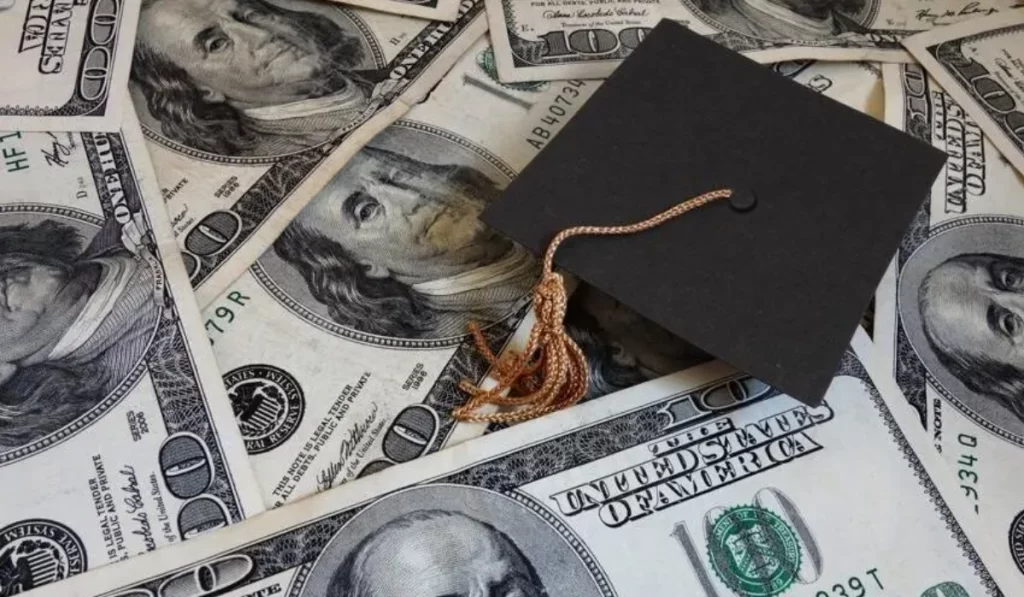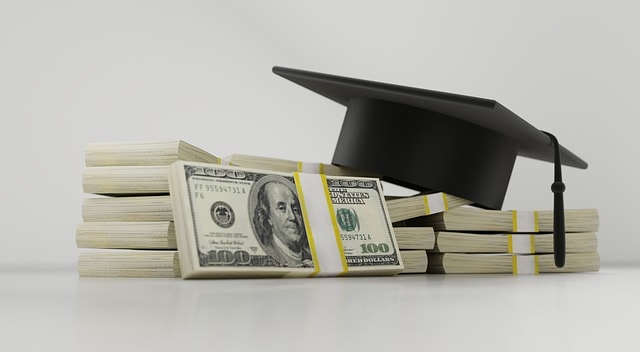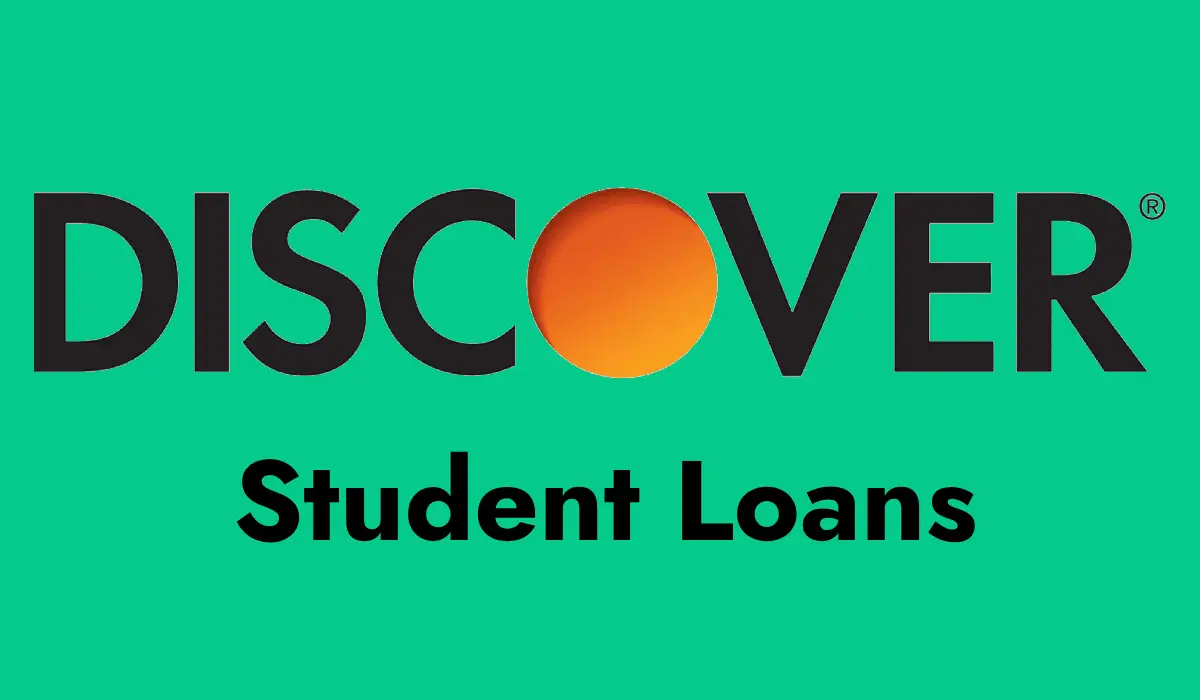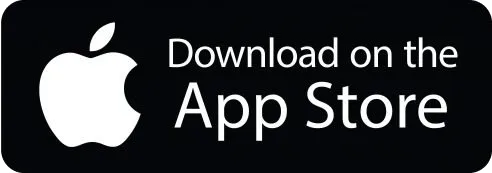What Are Discover Student Loans?
Discover student loans help students pay for college or university. Many people use these loans to pay for their education when they can’t cover the full cost with their own money or scholarships. Discover provided these loans for many years but stopped offering them on January 31, 2024.
Even though they no longer accept new student loan applications now, students with Discover student loans can still make payments and manage their loans as usual.
Discover Student Loans
A student loan is a financial tool specifically designed to help individuals cover higher education costs. Federal student loans, offered by the U.S. Department of Education, are a popular choice for many students due to their numerous benefits.
These loans typically come with lower interest rates and more flexible repayment terms compared to private loans. Borrowers can use federal student loans to pay for a variety of education-related expenses, including tuition, fees, and living costs. It’s crucial for borrowers to thoroughly understand the terms and conditions of their private student loan portfolio and loans to manage their debt effectively and avoid any financial pitfalls.

Applying for Student Loans
Applying for federal student loans begins with completing the Free Application for Federal Student Aid (FAFSA). This form is essential as it determines a borrower’s eligibility for federal student aid, including loans and grants. Borrowers can submit their FAFSA online or by mail, providing necessary personal and financial information. Once processed, borrowers receive a Student Aid Report (SAR), which outlines their eligibility for federal student aid. With this information in hand, borrowers can then apply for federal student loans through their school’s financial aid office, ensuring they have the financial support needed for their education.
Repayment Options
When it comes to repaying student loans, borrowers have several options to choose from. Income-driven repayment plans are particularly beneficial, as they cap monthly payments at a percentage of the borrower’s income, making it easier to manage debt.
There are various types of income-driven repayment plans, such as Income-Based Repayment (IBR) and Pay As You Earn (PAYE), each offering unique advantages. Alternatively, borrowers can opt for a standard repayment plan, which involves fixed monthly payments over a set period. For those facing financial difficulties, options like deferment or forbearance can temporarily suspend or reduce payments, providing much-needed relief.
Managing Your Student Loans
Effective student loan management is key to staying on top of payments and tracking debt. Borrowers can utilize online tools and resources, such as the National Student Loan Data System (NSLDS), to manage their loans. The NSLDS is a comprehensive database that tracks federal student loan debt and provides detailed information on loan status and repayment options.
Borrowers can access their loan information and make payments online through this system. Staying organized and regularly monitoring loan information can help borrowers avoid default and ensure they manage their debt effectively.

Student Loan Relief and Forgiveness
For borrowers struggling to repay their loans, student loan relief and forgiveness programs can offer significant assistance. These programs provide temporary or permanent relief from loan payments and may even forgive part or all of the debt.
Notable programs include Public Service Loan Forgiveness (PSLF) and Teacher Loan Forgiveness, which offer loan forgiveness after a certain number of qualifying payments for those working in public service or teaching.
Additionally, borrowers can explore other debt management options, such as consolidation and refinancing, to simplify payments and potentially reduce interest rates. These strategies can help borrowers manage their debt more effectively and achieve financial stability.
Different Types of Student Loans
There are two main types of student loans: federal loans and private loans. Federal loans are provided by the government and usually have better interest rates and flexible repayment options. Private loans, on the other hand, come from banks or other lenders, and they often have higher interest rates. It’s a good idea to apply for federal loans first because they usually offer more benefits.
Paying Back Student Loans
Once you finish school or drop below a certain number of classes, you have to start paying back your student loans. The amount you pay each month depends on the type of loan you have and how much money you borrowed. Some loans let you make smaller payments if you don’t earn a lot of money right after school. It’s important to keep track of your loan payments so you don’t fall behind.
Loan Forgiveness Programs
Some people can have part or all of their student loans forgiven, which means they don’t have to pay the rest graduate student loans back. This is often available for those working in certain jobs like teaching or public service. If you qualify, you can apply for programs that cancel your debt after making a certain number of payments.
Tips for Managing Student Loans
- Don’t borrow more money than necessary. Remember, you have to pay it all back with interest.
- Keep track of how much you owe and when your payments are due.
- If you’re having trouble making payments, look into different repayment plans or ask your lender for help.

Frequently Asked Questions
What is the monthly payment on a $10,000 student loan?
If you borrow $10,000, your monthly payment depends on how long you take to pay it back and the interest rate (the extra money you pay to borrow). For example, if you pay it back in 10 years with a 5% interest rate, you would pay about $106 each month.
Is $50,000 in student loans a lot?
Yes, $50,000 is a lot of money to owe. Some jobs pay enough to handle it, but others don’t. It can take many years to pay off, depending on how much money you make at your job.
Who qualifies for student loan forgiveness in 2024?
In 2024, people who work in public service jobs like teachers, nurses, or for the government may get their student loans forgiven after making payments for 10 years. Some people on special payment plans might also have their loans forgiven after 20 or 25 years.
Is $200,000 in student loans a lot?
Yes, $200,000 is a very large amount of money to owe. It’s usually for people who go to school for a long time, like doctors or lawyers. Paying it back can be hard unless you have a high-paying job. Some people use special payment plans to make it easier.
Why Did Discover Stop Offering Student Loans?
Discover decided to stop offering Discover student loans because the company wanted to focus on other areas of its business, like banking products. The company’s leadership, including the interim CEO, John Owen, said that after a regular review, they decided selling the Discover student loans business would help Discover grow in other areas.
Discover’s goal is to focus on the things they do best and bring more value to their shareholders. So, Discover decided to stop taking new Discover student loans applications and sell their current Discover student loans to another company.
What Happens If I Have a Discover Student Loan?
If you already have a Discover student loan, you don’t need to worry. Your loan terms, interest rates, and monthly payments will not change. Discover will transfer your loan to another company that will handle it from now on.
For now, you should keep making payments the same way you did before. Discover will send you information about the transfer, and you’ll get a message from the new company, too.
Related: Your Student Loan Payments Can Now Help You Save For Retirement

Who Will Take Over My Discover Student Loans?
Discover is transferring their student loans to a company called Firstmark Services, which is a part of Nelnet, a big company that handles Discover and private student loans too. Firstmark will start managing your loan, but nothing will change about how much you owe or your repayment plan.
You will need to update your payment details when the loan officially moves over to Firstmark, but you’ll get clear instructions about how to do that when the time comes.
How Will I Know When My Loan Is Transferred?
Discover will send you notices before the loan transfer happens. They plan to let you know 60 days, 30 days, and 15 days before the transfer, so you have plenty of time to prepare.
Firstmark, the new company managing the loans, will also send you a welcome notice explaining how to set up payments with them. They will make sure you have all the information you need so you won’t miss any payments.
Do I Need to Do Anything Right Now?
If you have Discover student loans, the best thing to do right now is to make sure Discover has your correct contact information. Make sure your phone number, email, and mailing address are up to date so you don’t miss any important messages about your new student loan applications.
Also, if you use automatic payments to pay your student loan, you’ll want to check that these payments will continue smoothly after the transfer to Firstmark. You may need to re-enter your bank details when the transfer is done.

Related: Private Student Loan Rates Move Up: Changes for July 23
What Happens to My Credit Report?
Your credit report will show that your Discover student loans were moved to Firstmark. This means that Discover will no longer report on your loan, and Firstmark will start reporting instead.
This change in credit history won’t affect your credit score, and everything will continue normally. Your loan history will still appear, and it will look like you have always been making payments, even with the new company.
Will My Loan Terms Change After the Transfer?
No, your loan terms won’t change when Discover transfers your Discover student loans to Firstmark. This means the interest rate you agreed to, the amount of time you have to repay the loan, and the monthly payment amount will stay the same.
Discover has promised that everything will remain the same except for the company managing the loan. The only thing you might need to do is update how you make your payments once the transfer is complete.
Related: Best International Student Loans Of 2024 – Latest Guide
What If I Need More Money for School?
Since Discover is no longer offering new Discover student loans, you will need to find other options if you still need money for school. Here are some steps to follow:
- Look for Scholarships: Scholarships are free money you don’t have to pay back. You can use tools like the Scholarship Search by Sallie Mae to find scholarships based on your major, location, and more.
- Fill Out the FAFSA®: This is the form you fill out to see what government grants, scholarships, and loans you qualify for. The government offers many types of financial aid, and it’s a good idea to use this first before looking at private loans.
- Look at Other Private Loans: If you still need more money for school after getting scholarships and government aid, you can apply for private student loans from other lenders. Here are a few options you might consider:
Alternatives for Discover Student Loans
1. Sallie Mae
Sallie Mae is one of the most well-known private student loan lenders. They offer loans for both undergraduate and graduate students. Sallie Mae allows you to borrow up to the total cost of your education, which means you can get personal loans to cover your full tuition, room and board, and other school costs.
They also offer student loans with flexible repayment plans and options like a cosigner release, which can help if someone else helped you get the loan.
2. Citizens Bank
Citizens Bank is another popular lender. They offer loans with competitive interest rates and allow you to borrow up to $350,000. One great thing about Citizens Bank is that if you already have an account with them, you can get special customer discounts.
Citizens Bank also has branches across the U.S., so if you prefer speaking to someone in person, this could be a good option for you.
3. SoFi
SoFi is an online lender that is known for its customer perks. Like Discover, SoFi doesn’t charge application fees, origination fees, or late fees. They also offer a range of member benefits, like free financial planning, and they have flexible repayment plans.
SoFi also allows you to borrow up to the full cost of attendance for your school, which is similar to what Discover used to offer.
Do You Know? Navient is Quietly Offering Private Student Loan Forgiveness – Latest News

Why It’s Important to Maximize Free Money First
Before you take out a private student loan, it’s important to use all the free money you can get. Scholarships, grants, and federal student loans usually have better terms than private loans. They can save you a lot of money in the long run.
Here’s what you can do:
- Fill Out the FAFSA®: This form helps you see what government aid you qualify for. The government offers grants, which are free money you don’t have to pay back, and federal student loans, which often have lower interest rates than private loans.
- Search for Scholarships: You can find scholarships based on your background, your major, where you live, and other factors. Scholarships don’t need to be repaid, so it’s like getting free money for school!
What Happens If You Don’t Pay Your Loan?
If you miss payments on your student loan, it can hurt your credit score, and you may face late fees. If you continue to miss payments, your loan could go into default, which means the company could take legal action to get their money back.
That’s why it’s very important to keep making your payments on time, even when your loan transfers from Discover to Firstmark. If you have trouble making your payments, you can always contact the loan servicer to see if they can help with a different repayment plan.
Understanding Student Loan
A student loan is a financial tool specifically designed to help individuals cover the costs of higher education. Federal student loans, offered by the U.S. Department of Education, are a popular choice for many students due to their numerous benefits.
These loans typically come with lower interest rates and more flexible repayment terms compared to private loans. Borrowers can use federal student loans to pay for a variety of education-related expenses, including tuition, fees, and living costs. It’s crucial for borrowers to thoroughly understand the terms and conditions of their student loans to manage their debt effectively and avoid any financial pitfalls.
Applying for Student Loans
Applying for federal student loans begins with completing the Free Application for Federal Student Aid (FAFSA). This form is essential as it determines a borrower’s eligibility for federal student aid, including loans and grants. Borrowers can submit their FAFSA online or by mail, providing necessary personal and financial information.
Once processed, borrowers receive a Student Aid Report (SAR), which outlines their eligibility for federal student aid. With this information in hand, borrowers can then apply for federal student loans through their school’s financial aid office, ensuring they have the financial support needed for their education.
Repayment Options
When it comes to repaying student loans, borrowers have several options to choose from. Income-driven repayment plans are particularly beneficial, as they cap monthly payments at a percentage of the borrower’s income, making it easier to manage debt. There are various types of income-driven repayment plans, such as Income-Based Repayment (IBR) and Pay As You Earn (PAYE), each offering unique advantages. Alternatively, borrowers can opt for a standard repayment plan, which involves fixed monthly payments over a set period. For those facing financial difficulties, options like deferment or forbearance can temporarily suspend or reduce payments, providing much-needed relief.
Managing Your Student Loans
Effective management of student loans is key to staying on top of payments and keeping track of debt. Borrowers can utilize online tools and resources, such as the National Student Loan Data System (NSLDS), to manage their loans. The NSLDS is a comprehensive database that tracks federal student loan debt and provides detailed information on loan status and repayment options. Borrowers can access their loan information and make payments online through this system. Staying organized and regularly monitoring loan information can help borrowers avoid default and ensure they manage their debt effectively.
Student Loan Relief and Forgiveness
For borrowers struggling to repay their loans, student loan relief and forgiveness programs can offer significant assistance. These programs provide temporary or permanent relief from loan payments and may even forgive part or all of the debt. Notable programs include Public Service Loan Forgiveness (PSLF) and Teacher Loan Forgiveness, which offer loan forgiveness after a certain number of qualifying payments for those working in public service or teaching. Additionally, borrowers can explore other debt management options, such as consolidation and student loan refinancing,, to simplify payments and potentially reduce interest rates. These strategies can help borrowers manage their debt more effectively and achieve financial stability.
Different Types of Student Loans
There are two main types of student loans: federal loans and private loans. Federal loans are provided by the government and usually have better interest rates and flexible repayment options. Private loans, on the other hand, come from banks or other lenders, and they often have higher interest rates. It’s a good idea to apply for federal loans first because they usually offer more benefits.
Paying Back Student Loans
Once you finish school or drop below a certain number of classes, you have to start paying back your student loans. The amount you pay each month depends on the type of loan you have and how much money you borrowed. Some loans let you make smaller payments if you don’t earn a lot of money right after school. It’s important to keep track of your loan payments so you don’t fall behind.
Loan Forgiveness Programs
Some people can have part or all of their student loans forgiven, which means they don’t have to pay the rest back. This is often available for those working in certain jobs like teaching or public service. If you qualify, you can apply for programs that cancel your debt after making a certain number of payments.
Tips for Managing Student Loans
- Don’t borrow more money than necessary. Remember, you have to pay it all back with interest.
- Keep track of how much you owe and when your payments are due.
- If you’re having trouble making payments, look into different repayment plans or ask your lender for help.

How Discover’s Exit Affects the Private Student Loan Market
Now that Discover is leaving the student loan business, some people wonder what will happen to the private student loan market. Other lenders, like Sallie Mae, Citizens Bank, and SoFi, will likely take on more borrowers now that Discover’s student loans name is gone.
For students looking for private loans, this could mean more competition between lenders. This might lead to better rates or more benefits, as companies try to attract more customers.
Discover student loans helped many students pay for college for years, but the company decided to stop offering new loans in 2024. If you already have Discover student loans, don’t worry—your loans won’t change. It will just be transferred to a new company called Firstmark.
If you need more money for school or medical now, there are other private loan lenders like Sallie Mae, Citizens Bank, and SoFi who can help. Just make sure to use all your free money options, like scholarships and government aid, before taking out a private loan.

Frequently Asked Questions
What is the monthly payment on a $10,000 student loan?
If you borrow $10,000, your monthly payment depends on how long you take to pay it back and the interest rate (the extra money you pay to borrow). For example, if you pay it back in 10 years with a 5% interest rate, you would pay about $106 each month.
Is $50,000 in student loans a lot?
Yes, $50,000 is a lot of money to owe. Some jobs pay enough to handle it, but others don’t. It can take many years to pay off, depending on how much money you make at your job.
Who qualifies for student loan forgiveness in 2024?
In 2024, people who work in public service jobs like teachers, nurses, or for the government may get their student loans forgiven after making payments for 10 years. Some people on special payment plans might also have their loans forgiven after 20 or 25 years.
Is $200,000 in student loans a lot?
Yes, $200,000 is a very large amount of money to owe. It’s usually for people who go to school for a long time, like doctors or lawyers. Paying it back can be hard unless you have a high-paying job. Some people use special payment plans to make it easier.






